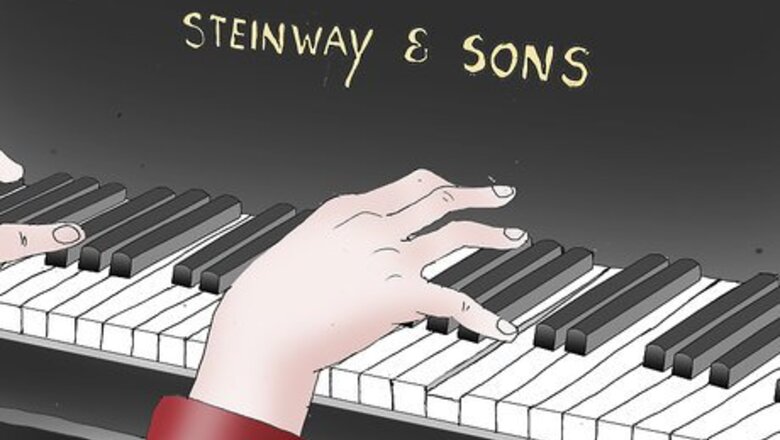
views
Choosing a Variety
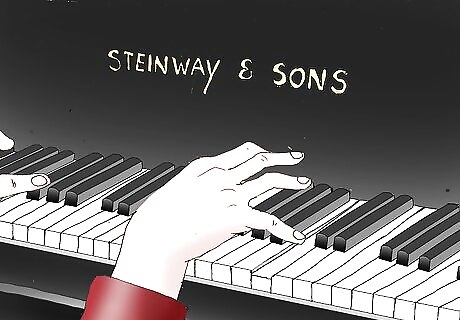
Start early with piano. Piano is a common starter instrument because it's easy to really see the music. Common in many cultures and styles of music, piano or keyboard is an excellent choice if you want to learn an instrument, regardless of whether you're young or old. Piano variations you'll be able to add to your repertoire later might include: Organ Piano accordion Synthesizer Harpsichord Harmonium Keytar

Rock out on a guitar. From classical to death metal, learning to play the guitar opens all kinds of doors into new music and styles. It's had an impact on pop culture more than probably any other instrument, and is a super-popular choice for first-timers everywhere. Pick up an acoustic guitar to stay mobile, or check out its electric cousin to get started bumming out your neighbors and playing heady licks. Once you've got guitar basics mastered, you could also add other instruments to your six-string canon: Mandolin Banjo Ukulele Lute Take it slow when you're first learning guitar. Around 20-30 minutes of practice per day is a good amount for beginners.
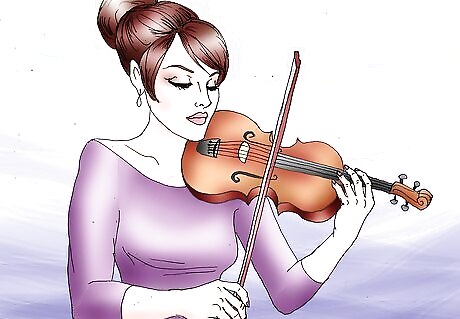
Consider picking up a classical string instrument. One of the most viable careers in music performance revolves around playing classical strings, in orchestras, string quartets, or other settings. The instruments of the chamber might be right for you if you've got an interest in classical sounds. While they may have a stuffy reputation, these are still commonly used in folk music and other settings all around the world. The classical strings include: Violin. This is generally seen as the "lead" instrument in the world of strings. It has an excellent range, is easy to hold, and is sublimely expressive in a way that few other instruments can even try to be. Viola. Somewhat larger than a violin, it's deeper and darker in tone. Therefore, if you aren’t really a fan of high squeaky notes, a viola might be a better choice. If you have longer arms, and larger hands, the viola might be easier for you. Cello. The cello is much larger than the violin and viola and must be played sitting down, with the instrument between your knees. It has a rich, deep tone akin to a male human voice, and while it can't reach the heights of a violin or viola, it is immensely lyrical. Upright bass. This is the lowest-sounding member of the violin family. In classical or chamber surroundings, it's most often played with a bow and occasionally plucked for effect. In jazz or bluegrass (where you will often find an upright bass), it's generally plucked and occasionally bowed for effect. EXPERT TIP Dalia Miguel Dalia Miguel Experienced Violin Instructor Dalia Miguel is a violinist and violin instructor based in the San Francisco Bay Area. She is studying Music Education and Violin Performance at San Jose State University and has been playing violin for over 15 years. Dalia teaches students of all ages and performs with a variety of symphonies and orchestras in the Bay Area. Dalia Miguel Dalia Miguel Experienced Violin Instructor Encourage kids to try classical instruments! According to Dalia Miguel, a violin teacher: "Violin is a great instrument for kids to learn because it's very hands-on. There's so much to do. It's one of the more complicated instruments, but as a teacher, you can make it very fun and easy to play."
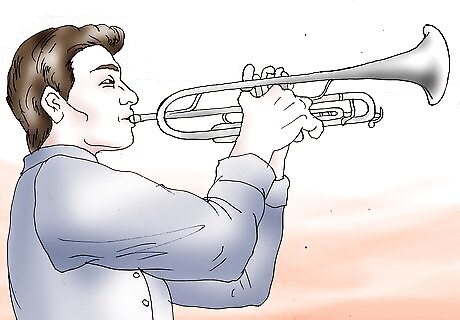
Shake hands with a brass instrument. Both simple and complex, brass instruments are basically long metal tubes that feature valves and buttons that alter the pitch. To play them, you buzz your lips inside a metal mouthpiece to create the sound. They're used in all types of concert bands and orchestras, jazz combos, marching bands, and as an accompaniment to old-school R&B and soul music. Brass instruments include: Trumpet Trombone Tuba French horn Baritone Sousaphone Alto horn Bugle Flugelhorn Piccolo trumpet Mellophone (a marching version of a horn)
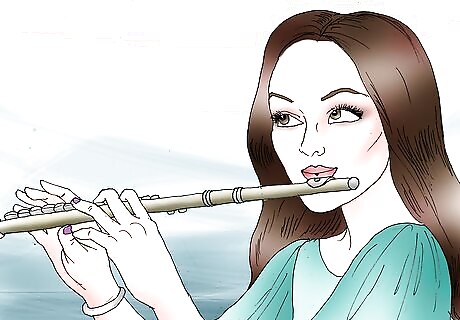
Don't forget about the woodwinds. Like brass instruments, woodwinds are played by blowing into them. Unlike brass instruments, woodwinds are played through reeds that vibrate as you blow over them (except for the flute - it is a reed-less instrument). Playing these instruments requires developing stamina because you are continually blowing into them. They make a variety of beautiful tones and are extremely versatile instruments to play jazz or classical music with. Woodwind instruments include: Flute, piccolo, or fife Saxophone Clarinet Oboe Bassoon Kazoo Harmonica Recorder Ocarina Tin whistle English horn Pan flute/panpipes Quena Bagpipes
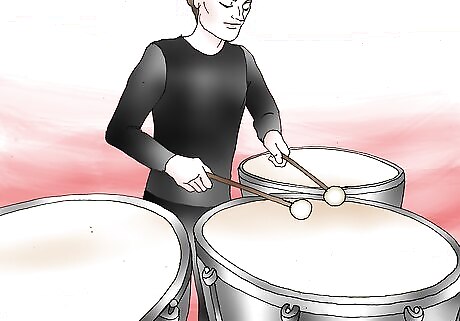
Get rhythm by taking up percussion. Keeping the time of most music groups is the job of the percussionists. In some bands, this will be provided on a kit drum, while other combos will feature a wider variety of instruments, banged on with mallets or hands or sticks. Percussion instruments include: The drum set Vibraphone, marimba, xylophone, and glockenspiel Bells and cymbals Congas and bongos Timpani Kalimba
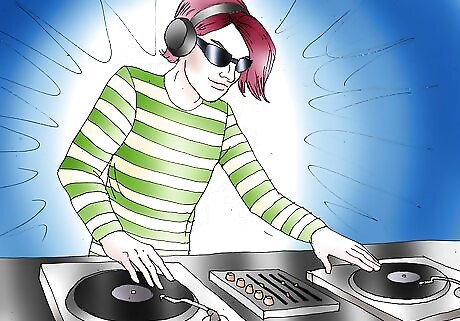
Consider new music instruments. People are making music with more things than ever before. You may have seen that guy on the street corner, with 5 gallon (18.9 L) paint buckets and saucepan lids, tearing up the rhythm. Drums? Maybe. Percussion, certainly. Consider playing: iPad. If you have one, you probably know by now there are some truly amazing musical instruments that defy categorization. Tap on the screen and a voice emerges from a puddle of blue on a green background. Flip apps, and now you're playing a vintage '80s synth that cost $50,000 then, and $.99 now—and sounds better. Have you got a couple of turntables? To be a great DJ takes a lot of skill and a lot of practice, and anybody who tells you that's not music is wrong.
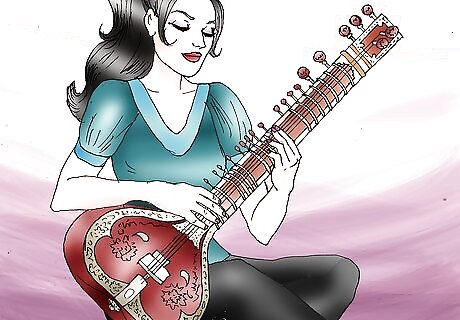
Check out this list. As you can see, there are more instruments than you can shake a rhythm stick at. Some of the difficult-to-categorize are listed below: Concertina Button accordion Melodica Theremin Harp Autoharp Zither Otamatone Erhu (Chinese two-stringed fiddle) Guqin (Chinese stringed instrument) Pipa (Chinese 4-stringed instrument) Guzheng (Chinese instrument, kind of like a plucked piano) Sitar Dulcimer Koto (Japanese harp)
Choosing the Right Instrument
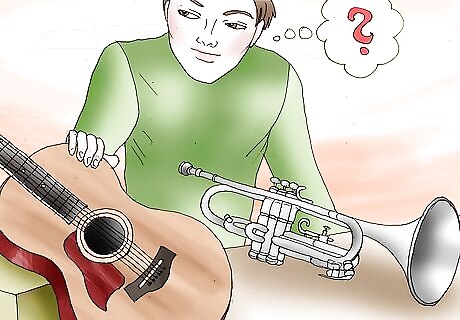
Experiment with lots of different instruments before committing. Get your hands on a trumpet, guitar, or trombone, and make a few notes. It won't be music yet, but it'll give you some idea of whether or not the instrument is fun to play, and worth spending some time with. Typically, if you want to sign up for a band or orchestra at your school, call-outs are regularly held during which the directors allow you to experiment with instruments and select one. Go to one of these call-outs and check out all the different kinds of instruments. Most instrument stores are excited to share their instruments with you and let you give them a shot. They might even be able to show you a few things.

Look into your possibilities. If you're starting out in a school band, check and see what instruments the band includes. Most concert bands in schools have clarinets, flutes, saxophones, tubas, baritones, trombones, trumpets, and percussion as starter instruments, and let you advance to other instruments like oboe, bassoon, and horn later on. You can begin making your decision from the instruments that are available. You can also ask the director which instruments they are short of—he or she will be very grateful if you can fill an empty spot.
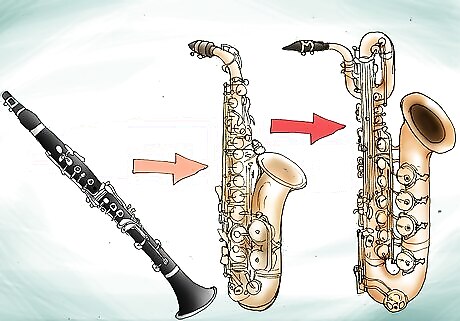
Keep your options open. You may want to play the baritone sax, but the band already has three players. You may have to first start on the clarinet, then move to alto sax, and finally switch to baritone when a slot opens up.
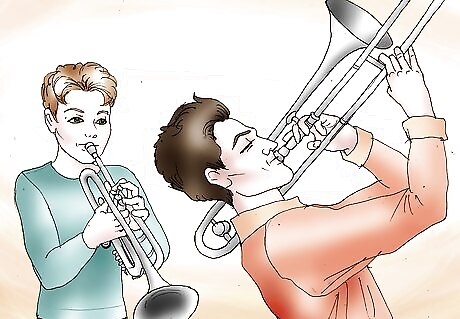
Consider your size. If you're starting out in middle school, and smaller than the average student, a tuba or trombone may not be the right instrument for you. A trumpet or cornet might be a better option instead. If you're younger or still losing teeth, you may find it hard to play some brass instruments because your teeth aren't very strong yet. If you have small hands or fingers, the bassoon may not be for you, although there are bassoons made for beginners with some keys for small hands. Think of how braces will affect your tone, especially for most brass. Find out whether you'll need them, or when any current braces will come off.
Finding the Right Fit
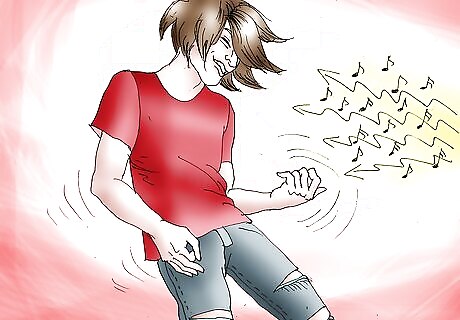
Play what you like. When you listen to the radio, Spotify, or your friend's mixtape, what do you hear that instinctively perks you up? Do you find yourself thrumming along to the bassline, or do you go into wild air-guitar frenzies? Perhaps you should look into stringed instruments. Do you thrash the air drums and beat your fingers on the table constantly? These are all great clues about what your "natural instrument" might be, and it involves hitting things with sticks, hands, or both!
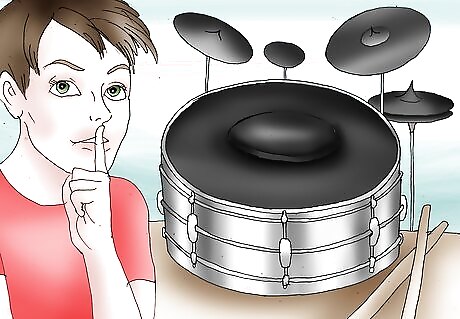
Play what will be practical for your situation. You may have a natural affinity for drums, but your parents have said, "No way—it's much too loud!" when you told them. Be creative—either suggest digital drums which you can only hear through headphones, or re-think your needs, and start with something softer and not as jarring, like a set of conga drums. Play drums in the school band, but practice at home with a rubber practice pad.

Just pick one. While you can be very analytical about what to play, there's another thing to try that has a lot of benefits. Close your eyes (after reading this), and write down the first 5 instruments that come to your mind. Now, look at what you wrote. One of those picks is your instrument. The first one came straight off the top: it might be what you really want to play, or it might be just what you associate learning music with. With each successive pick, you focused more on what you wanted. By the fifth choice, you may have been digging for an answer. It's a safe bet that all would be instruments you would enjoy, but which is the best choice? It all depends on who you are, and how you're going to learn.
















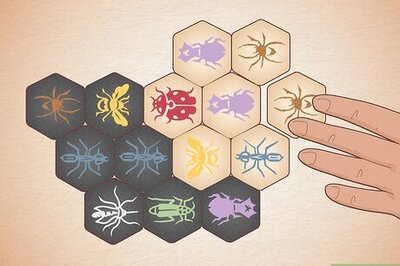
Comments
0 comment